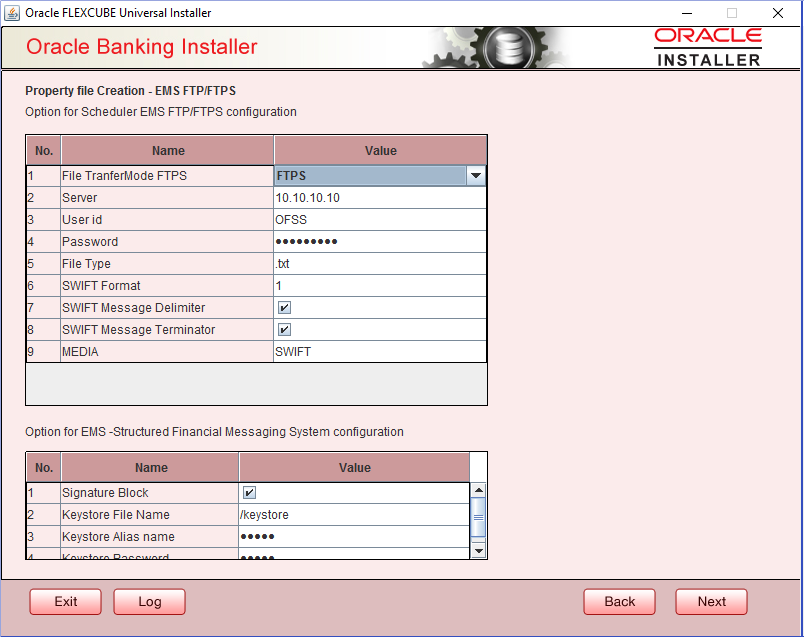1.2.7 Setting EMS FTP/FTPS Properties
This topic explains the EMS FTP/FTPS properties.
- Click the Next button and the following screen is displayed.Oracle Banking
Installer - Property File Creation - EMS FTP/FTPS screen is displayed.
Figure 1-6 Oracle Banking Installer - Property File Creation - EMS FTP/FTPS
- On the Oracle Banking Installer - Property File Creation - Scheduler EMS
Queue screen, specify the fields.
For more information, refer the field description table
Table 1-5 Property File Creation - EMS FTP/FTPS Configuration
Field Description Option for Scheduler EMS FTP/FTPS configuration File Transfer Mode FTPS Specify the mode of transferring files to EMS. Enter one of the following: - FTPS (FTP over SSL)
- SFTP(Secure FTP)
- HTTP(Hyper Text Transfer Protocol)
Note:
FTP is File Transfer Protocol.Server Specify the server IP address for the selected file transfer mode. User ID Specify the user ID to access the server of the file transfer mode. Password Specify the password to for the above user ID. File Type Specify the type of file that is transferred. By default, the Installer sets it as ‘.txt’. SWIFT FORMAT Specify the SWIFT format. SWIFT Message Delimiter Specify the character which is used as the message delimiter. SWIFT Message Terminator Specify the character which is used as the message terminator.
Once you have specified the above details,
Specify the EMS- Structured Financial Messaging System configuration details:
Option for EMS Structured Financial Messaging System configuration Signature Block Check this box to enable signature block. Keystore File Name Specify the keystore file name. Keystore Alias Name Specify the keystore alias name. Keystore Password Specify the keystore password.
Once you have specified the above details, click ‘Next’ and system displays the next screen
- Once you have specified the above details, click the Next button and the system displays the next screen.
Parent topic: Creating Property File
